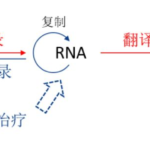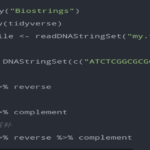J Sci Discov (2022); 6(1): jsd21103; DOI:10.24262/jsd.6.1.21103; Received October 15th,2021, Revised February 1st, 2022, Accepted March 23rd, 2022,Published June 15th, 2022.
Research on blocking and enveloping of virus
Wang Lin1, Wu Jiayi2,Feng Cuihua3, Jian Xuyan4,Wang Xi5
1Xianyang Vocational and Technical College
2Hongkou Central Health Center of Tongjiang County
3Tongjiang New District Hospital
4Tongjiang Maternal and Child Health Hospital
5pharmaceutical intern
* Correspondence:Wang Lin, Xianyang, Qindu District, Xianyang city, Shaanxi Province.E-mail: 1413625641 @qq.com.
Abstract
The virus in the human body stability into double chain, thus reducing the variation, in the use of virus blockers block the virus. Induced, virus parcel agent will not invade human cells and somatic cells release the virus cells for parcel eduction body outside, genetically, filtering the virus in the human body, but does not affect human cells, not cause body injury.
Keywords:virus, gene, blocker, wrapping agent
Questions to the field
(1) whether the virus can be stabilized into a double strand in the human body, thereby reducing the mutation, and thus making the drug oriented;
(2) the development of virus blockers (viruses cannot bind to receptors on cells);
(3) The proposal of immune wrapping agent (wrapping extracellular viruses).
Research direction
(1) The principle of base complementation pairing (base complementation pairing is used to stabilize the structure);
(2) central principle (reverse transcription) (stabilization of structure after reverse transcription);
(3) gene sequence (to find the rules of its genes);
(4) Use bait to prevent changing single strand (induced when using DNA as template).
Virus blocking agent
(1) Analysis structure
1.The basic structure of a virus consists of a core and a capsid, which form a nucleocapsid. The core is located in the center of the virion, providing genetic information for nucleic acid, replication, heredity and variation of the virus; The capsid is the protein shell surrounding the nucleic acid. Function of capsid :① antigenicity; ② Protective nucleic acid; ③ Mediates virus binding to host cells.
2.Auxiliary structure Of viruses Some viruses also have a lipoprotein bilayer membrane outside the nucleocapsid, which is acquired when the virus is released as a bud through the host cell membrane or nuclear membrane, called the envelope. There are glycoproteins encoded by the virus on the envelope surface, which are embedded into spikes, known as spikes. Enveloped viruses are sensitive to organic solvents. Capsule function: (1) nuclear capsid protection; ② Promote the adsorption of virus and host cells; ③ it has antigenicity. There are five stages of virus replication: adsorption, invasion, multiplication, maturation (assembly) and cleavage (release).
3.There are five stages of virus replication: adsorption, invasion, multiplication, maturation (assembly) and cleavage (release).
(2) Virus replication process
Virus replication refers to the whole process of virus particles invading host cells and finally releasing progeny virus particles, including adsorption, entry and uncoating, early gene expression of virus, nucleic acid replication, late gene expression, assembly and release.
(3) Blocking scheme
1.Inject virus blocking agent, containing ingredients: Cordyceps polysaccharide, oseltamivir phosphate.
(1) Extraction method: Extract cordyceps polysaccharides by fermentation of cordyceps mycelia; And oseltamivir phosphate.
(2) Mechanism of action: Cordyceps polysaccharide can block virus replication, and oseltamivir phosphate can act as an inhibitor of neuraminidase.
2.The virus spike protein was extracted and immunized with the receptor on the human cell membrane to form a protective film on the human cell membrane.
(1) Extraction method: Centrifuge is used to separate the cells according to different cell mass and decompose the virus spike protein.
(2) Mechanism of action: the cell membrane forms endemic immunity. When the virus invades human cells, it absorbs endemic immunity and cannot be absorbed in human cells.
3.Adding antireceptor molecules, and antireceptors may have several functional domains, each interacting with a different receptor. Mutations in the gene encoding antireceptor can inactivate or destroy the proteolytic enzyme, β -glycoxiase and neutralizing antibody of antireceptor, which can lead to the loss of the ability of antireceptor to interact with receptor, thus affecting the infectivity of the virus
(4)Immune wrapping agent
<1>Analysis principle
(1) The virus comes into contact with a normal cell, the viral envelope fuses with the cell wall of the normal cell (with glycoproteins on it), and the virus injects its genetic material into the normal cell, where it replicates using the material of the normal cell (replicating the genetic material and the protein envelope);
(2) On the other hand, the genetic material infiltrates into the target cell through the material transport channel of the target cell, and then integrates
with the DNA of the target cell to replicate the genetic material and protein shell in the target cell, which is released after cell death and recycled again. Individual viruses can even enter the target cell by endocytosis.
<2> Method of parcel
The surface of nanocells fully imitates the cell membrane of human body, and the virus suppressor gene is attached inside to induce the virus to enter the cell, so that the virus can not be released inside the cell, and the virus inside and outside the cell membrane is wrapped.
(1) Manufacturing method: extract cell membrane surface components, and the surface of nanocells contains red blood cell adsorbent, to produce nanocells.
(2) Mechanism of action: When the virus blocker blocks the virus outside the cell, the immune wrapping agent plays a role by inducing the virus to enter the nanocells, thereby inhibiting the activity. With the absorption of blood, the virus will be filtered by the kidney and excreted out of the body through excreta.
Appendix:
(Stability of double chain structure) solution
(1) RNA follows the principle of base complementary pairing, and DNA pairing principle A=T, C=G. RNA pairing principle A=U, C=G. The method of A marker staining and nucleic acid molecular hybridization is not complicated. Before hybridization, the DNA to be analyzed was denatured by heating or adding alkali, and separated into single: and the U in RNA was labeled and stained, and then the nucleic acid probe labeled with radionuclide was added, and the double-stranded hybrid molecules with radionuclide labeling were obtained by cooling and annealing. Find the intersecting segments and change their positive and negative structures to form the superhelix.
(2) The single-stranded RNA of the virus is released after entering the host cell, and this RNA carries tRNA primers complementary to the template. With this RNA as the template, the reverse transcriptase synthesizes DNA chain (-) from the 3 ‘-oh end of the primer in the direction of 5’ →3 ‘according to the principle of base complementation to form RNA-DNA hybrid molecules, and then the reverse enzyme performs THE ACTIVITY of RNA hydrolase. Finally, using the newly synthesized DNA strand (-) as template, another DNA strand (+) is synthesized to form double-stranded DNA molecule (virus), which is integrated into the host genome. With the transcription of host cells, viral RNA(+) is generated, which can translate viral protein and be used as the viral RNA of offspring.
(3) Change the base stacking force
(1)Change base stacking force The longitudinal interaction between base pairs can further stabilize the double strand. RNA is single strand, but local fragments can self-double strand. The formation scheme: make RNA with reverse complementary sequences.
2.An RNA has a free phosphate group, which is bonded to both phosphate groups to form ionic bonds with positively charged cations, which reduce the electrostatic repulsion between the double strands and thus stabilize the RNA double helix structure.
(4) By studying genes
Codon: Three stop codons: UAG, UAA and UGA. The structure and function of RNA are studied in detail. By changing the gene sequence, the replication process is terminated in advance to achieve no mutation and keep the gene sequence 冯stable.
note
1.Initial hydrolysis of 4 products by RNA; Guanine ribotide adenine ribotide cytosine ribotide uracil ribotide;
2.Completely hydrolyze 6 products; Cytosine uracil adenine guanine pentacarbose phospholipid molecule, and then genetic pairing.
Conflict of interest
None
Acknowledgments
None
References
(1)Hie B, Zhong ED, Berger B, et al. Learning the language of viral evolution and escape. Science. 2021 Jan 15;371(6526):284-288. doi: 10.1126/science.abd7331. PMID: 33446556.
(2)Kim YA, Przytycka TM. The language of a virus. Science. 2021 Jan 15;371(6526):233-234. doi: 10.1126/science.abf6894. PMID: 33446542.
(3)Model analyzes how viruses escape the immune system.https://phys.org/news/2021-01-viruses-immune.html.
Copyright
© This work is licensed under a Creative Commons Attribution 4.0 International License. The images or other third party material in this article are included in the article’s Creative Commons license, unless indicated otherwise in the credit line; if the material is not included under the Creative Commons license, users will need to obtain permission from the license holder to reproduce the material. To view a copy of this license, visit http://creativecommons.org/licenses/by/4.0/




